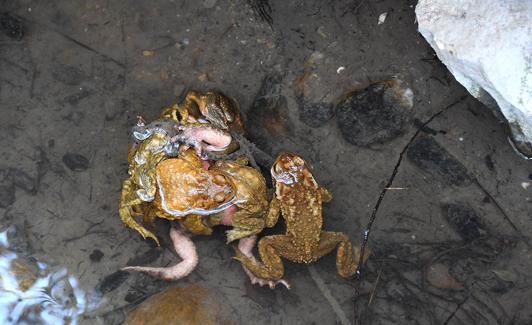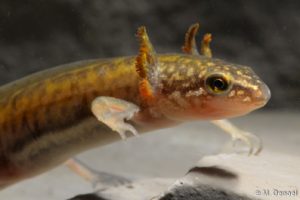La reducción de los hábitats llevará consigo elevados incrementos en los riesgos de extinción de esas 1.700 especies, que incluyen 886 de anfibios, 436 de aves y 376 de mamíferos. Leer más.






La reducción de los hábitats llevará consigo elevados incrementos en los riesgos de extinción de esas 1.700 especies, que incluyen 886 de anfibios, 436 de aves y 376 de mamíferos. Leer más.
Los sapos de la Alhambra, denominados como ‘sapos nazaries’ cuando hace unos años fueron objeto de programas de cuidados y reitroducción en esta zona (reportaje de IDEAL del 15 de julio de 2014) han consolidado sus poblaciones y han vuelto a formar parte de la fauna del Cerro del Sol y la colina de Santa Elena, gracias a los esfuerzos de la Sociedad Granadina de Herpetología y a numerosos voluntarios que, cada año, colaboran en el mantenimiento y cuidado de los anfibios, como los alumnos de las Escuelas del Ave María, que colocan carteles a lo largo de las acequias para dar a conocer la presencia de los sapos y pedir a los visitantes que no dejen a sus perros que caminen por el cauce, ya que con esa acción exterminan a una gran parte de los anfibios de esta acequia, primero porque no les permiten aparearse, después porque destrozan los cordones donde se encuentran los huevos y, más tarde, matan a las larvas. Leer más.

Evolutionary theory predicts the evolution of metamorphosis over paedomorphosis (the retention of larval traits at the adult stage) in response to life in unfavourable habitats and to the benefits of dispersal. Although many organisms are canalised into obligatory complex or simple life cycles, some species of newts and salamanders can express both processes (facultative paedomorphosis). Previous research highlighted the detrimental effect of fish on both metamorphic and paedomorphic phenotypes, but it remains unknown whether predation risk could induce shifts from paedomorphosis to metamorphosis, whether behavioural avoidance could be an alternative strategy to metamorphosis and whether these responses could be sex-biased. Leer más.

Evolutionary theory predicts the evolution of metamorphosis over paedomorphosis (the retention of larval traits at the adult stage) in response to life in unfavourable habitats and to the benefits of dispersal. Although many organisms are canalised into obligatory complex or simple life cycles, some species of newts and salamanders can express both processes (facultative paedomorphosis). Previous research highlighted the detrimental effect of fish on both metamorphic and paedomorphic phenotypes, but it remains unknown whether predation risk could induce shifts from paedomorphosis to metamorphosis, whether behavioural avoidance could be an alternative strategy to metamorphosis and whether these responses could be sex-biased. Leer más.

Reptiles show an amazing color diversity based on variation in melanins, carotenoids, and pterins. This study reveals genes controlling differences between three color morphs (white, orange, and yellow) in the common wall lizard. Orange pigmentation, due to high levels of orange/red pterins in skin, is caused by genetic changes in the sepiapterin reductase gene. Yellow skin, showing high levels of yellow carotenoids, is controlled by the beta-carotene oxygenase 2 locus. Thus, the color polymorphism in the common wall lizard is associated with changes in two small regions of the genome containing genes with crucial roles in pterin and carotenoid metabolism. These genes are likely to have pleiotropic effects on behavior and other traits associated with the different color morphs. Leer más.
